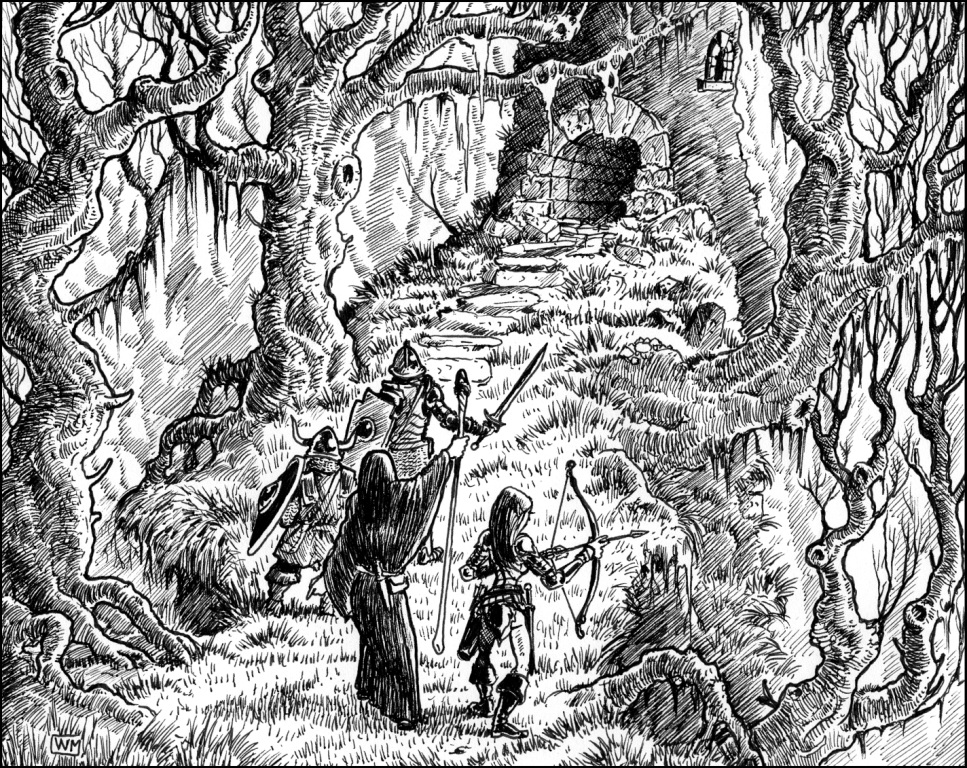The iconic view of a dungeon is of a constructed underground complex stuffed full of monsters and loot. There are other kinds of dungeon, though, ripe for adventure.

Dungeons are perhaps the iconic location of many fantasy roleplaying games. These deep subterranean complexes have rooms, corridors, doors and other familiar features. This isn’t the only kind of dungeon, though. Other dungeon-like venues for adventure exist.
A few examples of alternate locales for a dungeon adventure include:
- Buildings: Castles, cathedrals, haunted manor houses or even particularly capacious warehouses could all make a great dungeon locale. With windows, roofs and possibly battlements, such locations would undoubtedly have many more access points than a normal dungeon. Such “dungeon” could even be set in the middle of a town or city!
- Caves: Networks of natural caves can serve as excellent dungeons in their own rights. In all likelihood, the denizens will make some effort to make them more comfortable – levelling the floor and so on – and such locales could extend for miles. Because nature has done much of the construction work, these locations are particularly attractive. They are probably the second most commonly encountered dungeon type. Even the caves themselves can be atypical. Networks of ice caves, sunken cave systems hidden deep beneath the ocean’s waves and even the warrens of gigantic insects could all make excellent adventure sites.
- Sewers: Terrific venues for a dungeon adventure, sewers are rife with noisome denizens and disease. Their proximity to the streets above provides explorers with easy access and a safe place to retreat to after a foray. Because sewers are often as extensive as the settlement which they serve, they can be particularly expansive.
- Mines: Often of dwarven construction, mines differ from a standard dungeon in terms of function and form. The layout and architecture of the place will be different and it will in all likelihood lack many of the traditional rooms such as throne room, prisons, torture chambers and so on.
- Huge trees: A fixture in ancient forests and elven domains, the trunks and branches of huge trees can be large enough to contain a dungeon. Either the dungeon could be built among the tree’s branches, or it could be carved into the its trunk.
- Demi-planes: These are perhaps the most fantastical of all dungeons. Created by powerful folk such as archmages and demi-gods, demi-planes are an excellent venue for a dungeon. Here time may flow differently, magic may be subtly (or unsubtly) altered and even the laws of physics may be different. Extra-dimensional spaces also fall into this category. Both can be as large or small as a GM desires.
- Gigantic Spider Web: Vast colonies of spiders – or several huge spiders – could conceivably create an incredibly vast web with rooms and corridors on many different levels.
- Dense Vegetation: Where vegetation is particularly dense – perhaps in primal forests, for example – trails become corridors and clearings become rooms. Such locales could be the demesne of fey creatures or even a cabal of druids.
Help Fellow Gamers
Do you have any other dungeon design tips related to this topic? If you do, please leave them in the comments below and help your fellow GMs design better dungeons today!
This article is part of Dungeon Design Fortnight. Dungeon Design Fortnight celebrates Raging Swan Press’s upcoming release of GM’s Miscellany Dungeon Dressing – a huge 336-page tome dedicated to all aspects of dungeon design and dressing. This article, along with loads of other useful information, appears in the book. I’m insanely proud of GM’s Miscellany Dungeon Dressing and I hope if you are thinking about designing dungeons you check it out.
Normal villages, towns, castles, but located in strange places: on clouds, at the top of a ruined staircase by the light of a full moon, etc. Think Brigadoon.
You mentioned nests, but look at actual nests like a paperwasp- what would a giant paperwasp nest be like? I bet a scientist has helpfully mapped them!
Make your dungeons lived in. Intelligent monsters will have a latrine, a larder, etc. Imgine living there, not just encounters. This will make the game more immersive for your players, too.
You mentioned sewers, what about rooftops? In the Middle East in the middle ages, entire second cities thrived on rooftops. Houses, shops, open air markets . . .fun!
I love the rooftop open air market idea. Genius (and great flavour)!
I really like the idea of dense jungle, and allow way for druids to go through walls and fighters to cut through them etc
Recently started a older underground beneath my groups city far older. predates the city above. Might work some Greek mythology into it.
My last dungeon was a huge spherical storm in the primal Plane of Air, where the walls were made of dangerous clouds. Passing through walls would trigger and ice storm or finishing near one would trigger a shocking grasp. End boss was of course a huge air elemental, using Yan-C-bin from Elemental Evil as boss. He had some limited use of his legendary or lair actions while the heroes navigated the storm.
This sounds pretty epic. I hope the players enjoyed the game (and survived!)